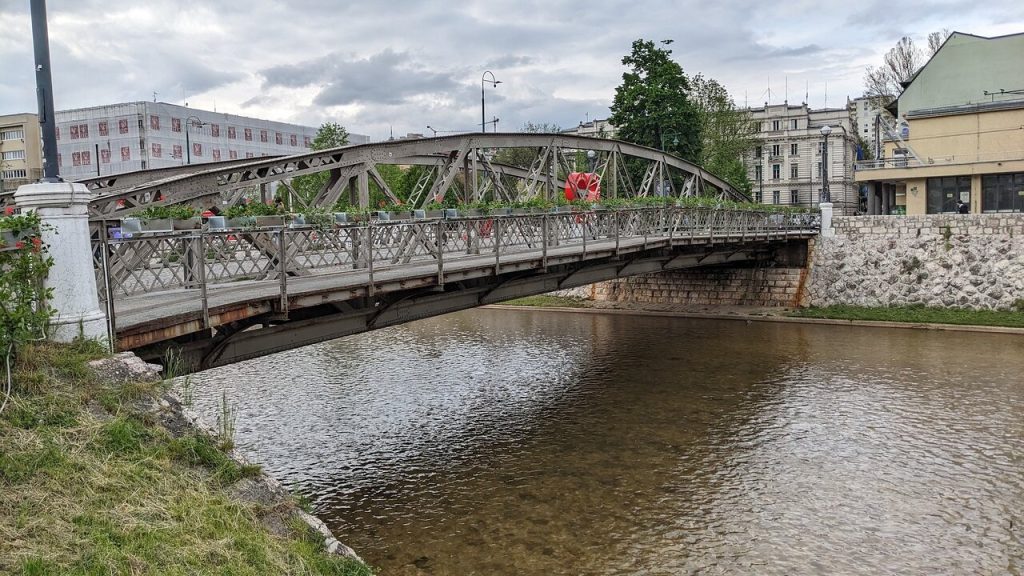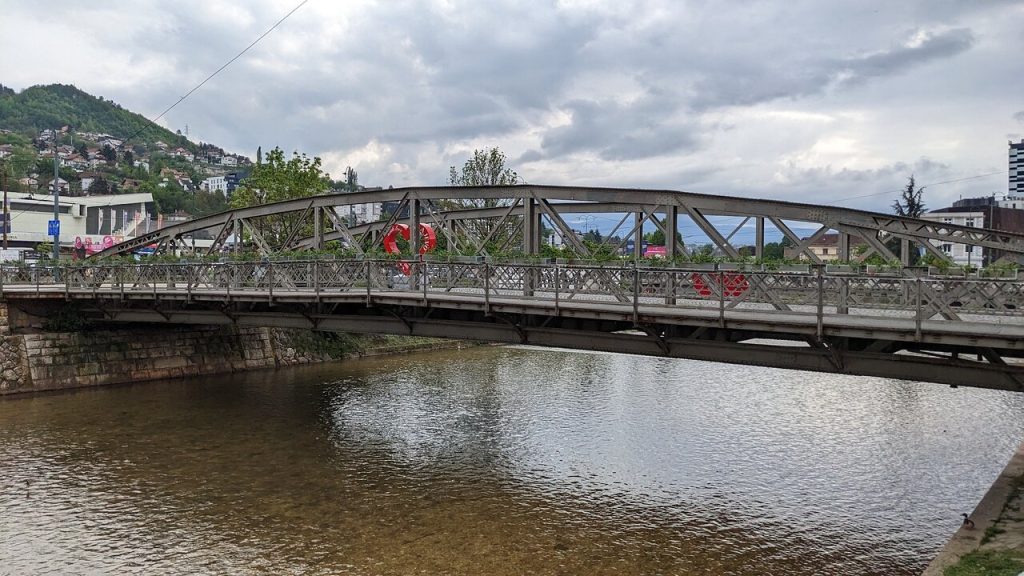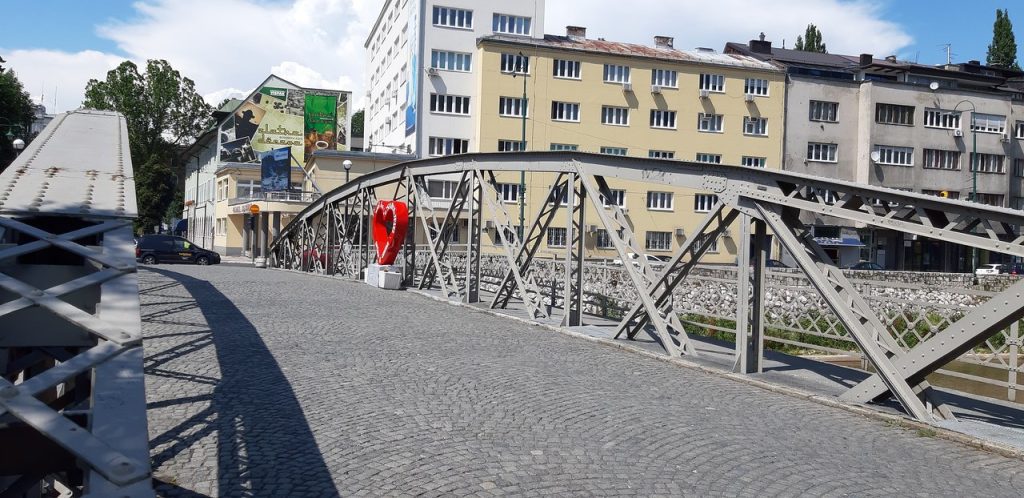The “Eiffel Bridge” (also known as the Drvenija Bridge) in Bosnia and Herzegovina is located in the capital, Sarajevo, and holds historical significance. While it is popularly associated with the famous French engineer Gustave Eiffel, there is no conclusive evidence proving his involvement in its design. The bridge, constructed in the late 19th century over the Miljacka River, serves as an important link in Sarajevo’s urban transport. For both locals and tourists, the Eiffel Bridge stands out as one of the city’s notable historical and cultural landmarks.
The architecture of the Eiffel Bridge is simple yet functional. Made of iron and steel, it reflects the modern engineering techniques of the Industrial Revolution. The horizontal lines and plain iron railings give the bridge a sleek and minimalist appearance. The metal materials used in its construction ensure durability and longevity, showcasing the characteristic features of industrial architecture of the time. The Eiffel Bridge stands as an architectural piece that blends functionality with aesthetic simplicity, harmonizing with Sarajevo’s historical fabric.



